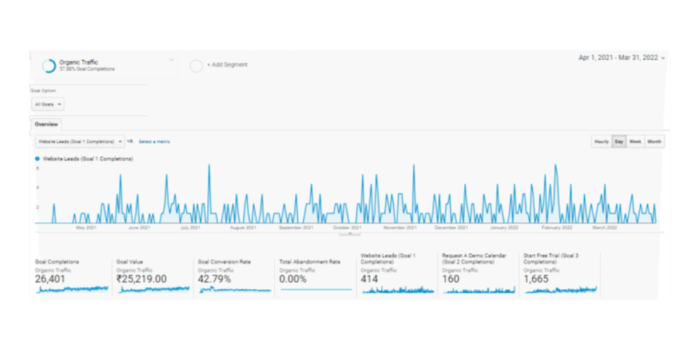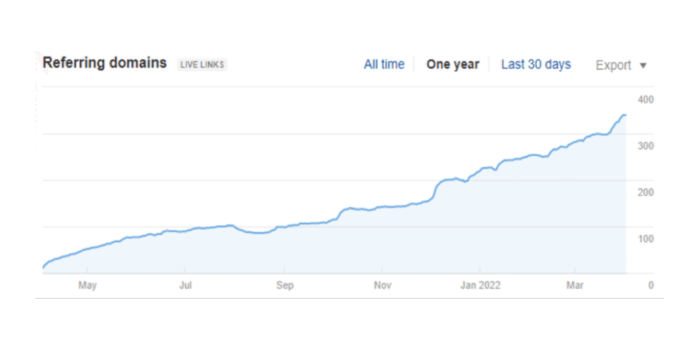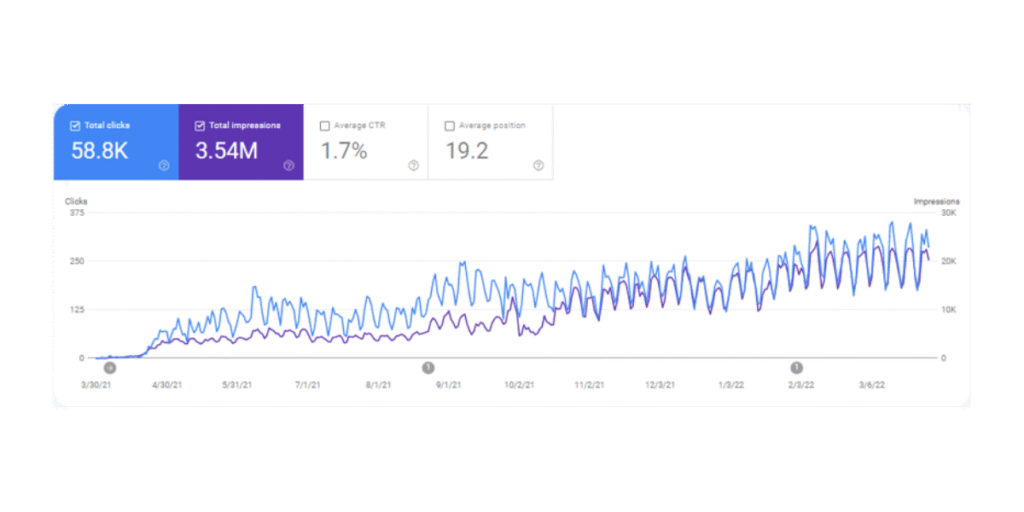SEO For SaaS
414 Organic Leads in 12 Months for New SaaS Brand
414
Organic Leads Generated
3rd
Traffic Started From 3rd month
20+
High-Intent Keywords Ranked Early

Campaign Type
SEO for B2B SaaS Lead Generation
Channels
Google Organic Search
Target Location
Global B2B Markets
Target Audience
Marketing Managers, Packaging Teams, Product Teams, Creative Directors in FMCG, Pharma, FMCD, F&B, and Chemicals
Target Industry
B2B SaaS | Marketing Tech | Packaging & Artwork Automation
About The Client
The client is a newly launched SaaS platform focused on solving a niche but critical business challenge: packaging artwork and label approval management.
Their cloud-based tool helps mid-to-large enterprises streamline design collaboration, compliance reviews, and artwork version control, solving major bottlenecks in product launch timelines.
Despite backing from a larger parent company, this brand was launched with a fresh domain, zero authority, and no initial organic presence in an already competitive B2B martech space.
Challenges Client Faced
Despite being backed by a reputed parent company, the client’s newly launched SaaS product entered a highly specialized, low-volume B2B category where organic traction is slow and buyer journeys are long. Their biggest challenge was not just visibility, but capturing demand for a solution that buyers weren’t actively searching for yet.
- Low Search Volume, High-Intent Keywords
- Undefined Content Funnel for the Buyer Journey
- Competitive Noise from Established Enterprise Platforms
- Unoptimized Product Messaging in Search
- Missing Role-Based Content Personalization
Our Observations
From our strategic audit and market immersion, we identified five key factors limiting the brand’s ability to build traction and generate qualified inbound demand
Niche Category, Unstructured SERPs
The packaging and artwork approval space lacked standardized language. Keywords varied drastically by industry, making it difficult to rank unless messaging, metadata, and content matched the exact buyer language.
No Demand Capture Pages by Industry or Role
A packaging head at an FMCG brand and a marketing lead at a pharma company have very different priorities. The client lacked segmented landing pages to reflect these difference.
Slow Content Rollout Post-Launch
The brand waited for technical perfection before publishing core content. This delayed indexing and limited early keyword signals to Google.
Search Intent Misalignment
Many keywords that seemed relevant (eg - label management system) actually pulled in traffic looking for compliance software or print tools resulting in high bounce rates and unqualified visits.
Underutilized Trust Builders
The brand had powerful internal credentials, but lacked use cases, benchmarks, and proof points visible on the site or in SERPs to increase credibility and conversion.
CodeRenowned Solution
To win in a complex, intent-fractured market, our strategy focused on two tracks simultaneously:
- Positioning the platform for ultra-specific industry needs
- Creating high-conversion organic entry points for each role, problem, and stage of awareness
We broke the execution into four high-impact pillars.
Our SEO Strategy
1. Search Persona & Keyword Matrix
We built a keyword map across:
Industries: FMCG, Pharma, F&B, FMCD, Chemicals
Roles: Packaging heads, creative directors, brand managers
Pain points: Delayed approvals, compliance errors, artwork versioning
Each combination gave us a precise content opportunity with a tailored search angle.
2. Segmentation-Driven Landing Pages
Designed SEO pages aligned to each vertical and role
Added trust-building modules like – Used by 3 of the Top 10 FMCG Brands
Included use-case videos and scroll-triggered CTAs for higher engagement
3. TOFU & MOFU Content Engine
We produced:
TOFU blogs like “Why Packaging Delays Hurt GTM”
Comparison pages like “Artwork Approval Software vs Design Collaboration Tools”
Middle-funnel guides focused on use cases per industry
Each blog had embedded CTAs, internal links to product pages, and schema markup.
4. Conversion Architecture & SEO UX
Added role-based exit popups with lead magnets
Created form-focused CTAs (“Book Artwork Demo for Pharma”)
Improved scroll behavior and lead form completion with micro-interactions
Campaign Execution
Our campaign focused on consistent, compounding SEO growth over a period of 12 months:
Phase 1: Month 1–3
SEO audit, technical cleanup, sitemap structuring
Launched initial pages for 3 core industries (FMCG, Pharma, F&B)
Identified 20+ low-difficulty keywords with high intent and low competition
Phase 2: Month 4–6
Added TOFU content to build topical authority
Began indexing for “artwork approval” related keywords
Started building contextual backlinks from industry directories & content hubs
Phase 3: Month 7–9
Layered in industry-specific case studies and testimonials
Launched comparison and glossary pages
Embedded lead forms throughout reading paths (desktop and mobile)
Phase 4: Month 10–12
Ongoing on-page optimization from Google Search Console insights
Introduced FAQ schema and article schema
Optimized performing content and doubled down on converting posts



Results
Traffic & Visibility
- 414 Organic Leads Generated in 12 Months via inbound lead forms
- 20+ High-Intent Keywords Ranked on Page 1 “Artwork approval tool for FMCG” “Pharma label approval software” “Packaging artwork workflow SaaS”
- Organic Traffic Growth from Month 3
- Strongest Conversions from Vertical Pages (FMCG and Pharma pages contributed to 60% of all leads)
- Highest lead-to-demo conversion rate came from Pharma page (27%)
This case study proves that category-specific B2B SaaS SEO requires more than keyword ranking, it requires intent understanding, role alignment, and conversion-first UX. Through precise segmentation, content architecture, and ongoing refinement, CodeRenowned team helped this new SaaS brand stand shoulder to shoulder with mature competitors, driving 414 high-quality inbound leads in its first year.
You Could Be Our Next SEO Success Story
Ranked for 20+ high-intent keywords and saw traction from month 3. Let’s build a scalable SEO engine for your SaaS growth.

